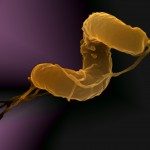Link to Pubmed [PMID] – 27892738
Expert Rev Proteomics 2017 01;14(1):55-68
INTRODUCTION: The proper folding of native proteins is critical and dynamic, but inherently unstable. Therefore, proteins eventually end up adopting misfolded conformations which compromise their function and may even trigger aggregation. Risk factors for neurodegenerative, metabolic and heart diseases compromise cellular protein quality-control systems, promoting protein aggregation. Multiple protein post-translational modifications dynamically regulate protein aggregation and disaggregation in a very complex, intricate and delicate balance. Areas covered: Herein, we overview the more promising techniques and approaches for the elucidation of the biological implications of protein aggregation. The particular insights provided by different techniques were discriminated and several examples of post-translational modifications together with their targets were pooled and critically discussed, representing promising future therapeutic targets. Expert commentary: In the years to come, differences between physiological and pathological protein aggregation will certainly become easier to determine. Techniques such as hydrogen/deuterium exchange, circular dichroism spectroscopy and novel mass spectrometry-based approaches are being optimized and are expected to introduce inhibitors of protein aggregation into the clinic. However, protein aggregation is not an isolated phenomenon, but rather influenced by multiple cellular components which complete knowledge is still far.

